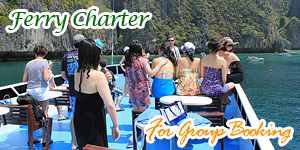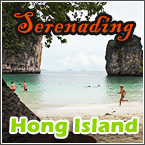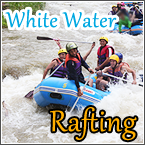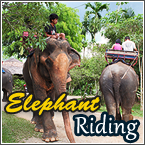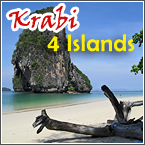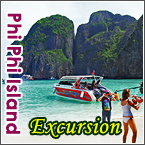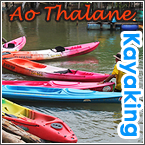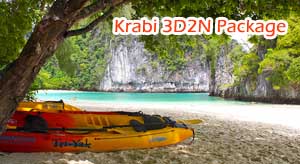Similan Exploratory Trip
June 4, 2009 by admin
Filed under Phanga-nga
Voyeurism Among The Reef Communities
Consists of numerous islands with high and steep granite mountain, beaches and rocks formation of many shapes. The shoreline of each islands are of inconsistent curves since they are situated in the outer part of the sea and are worn away directly by waves. Part of the water lies in the Andaman Sea and eastern side of the Indian Ocean while the shoulder of the continent borders the western shoreline of Phang Nga province and Union of Myanmar, paralleling the Nikobar Islands of India.
There is no mud at all along the beaches, so the sands are very clean, white and very fine. Some islands do have hills in the area, which are usually quite tall with the highest top of 244 meters above mean sea level, while some islands are of flat area surrounded by sand dunes and coral reefs. The major residents of the reef are coral and the closely related sea anemones; which contains all radially symmetrical invertebrate animals. Corals and sea anemones exist as individual polyps living in either solitary or mostly colonial forms. The polyps of hard corals construct communal limestone homes which are built up into a multitude of shapes and sizes eventually giving rise to a coral reef. Soft corals have soft bodies made of large numbers of identical polyps connected by fleshy tissue. These soft corals contain small algae within their tissues which are able to convert the sun’s energy into food. This cooperative relationship is known as symbiosis and also exists in hard corals, clams and other marine organisms. There are several factors that support good environment for the reef i.e. temperature, salinity, light, wave and tide, sedimentation and nutrient. Therefore, healthy coral reef can be found easily in the Andaman Sea comparing to the Gulf of Thailand. In Andaman Sea, coral reefs are able to classified as deep water and medium water. For the deep water coral reef grow down to 30 m. Of course, in this case water allows enough light for the algae. This reef type is mostly found in Similan and Surin islands. For the rest area, medium water coral reef grow between 8-15 m beneath the surface.
Beneath the sea at Mu Ko Similan National Park lies a complex ecosystem commonly called the rainforest of the sea: the coral reef. Coral can also be classified to fall into these structural categories: massive, columnar, encrusting, branching, foliceaous, laminar and free-living coral. The hard corals found in Mu Ko Similian National Park are deep water species of mostly staghorn coral types and the smaller cauliflower shaped types. Many other species of marine life co-exist within the coral reef: Gorgonian sea fans, flower-like soft coral, several species of crabs, spiny painted lobsters, squid, sponges, sea cucumbers and giant clams. Above the sea surrounding each island lies Beach forest, which steadily becomes Tropical forest further inland. Resident species include the Brahminy Kite, and the White-breasted Waterhen, while migratory species include the Pintail Snipe, and Grey Wagtail. Temporary migratory species include the Barn Swallow, Cattle Egret, Watercock, and the Roseate Tern. The most commonly seen species include the Pacific Reef-Egret, Nicobar Pigeon, Pied Imperial Pigeon, White-bellied Sea-Eagle, and the Collared Kingfisher. The environment of Mu Ko Similian National Park is obviously that of a small island, wherever you go, you are not far from the sea. Natural fresh water reserves are few, and as a result, large mammal species cannot exist. Surveys have revealed that 27 species of small mammals exist within the park, including 16 species of bats namely: the black-bearded tomb bat, the lesser false vampire bat, the intermediate horseshoe bat, the lesser bent-winged bat, and the hairless bat. 3 species of squirrels can be found including the gray-cheeked flying squirrel. 4 species of rats: the yellow Rajah rat, the ricefield rat, roof rat and noisy rat can be seen scurrying around as well. Finally, the more unusal but fairly common residents include the bush tailed porcupine, common palm civet, flying lemur and the bottlenosed dolphin. 22 species of reptiles and amphibians can be found in the park including the banded krait, reticulated python, white-lipped pit viper, common pit viper, garden blue lizard, hawksbill turtle, leather turtle, bengal monitor lizard, common water monitor lizard, ornate froglet, common asiatic frog, marsh frog, and the common bush frog. Finally, another most interesting species located in the Similans island is called the hairy leg mountain land crab. This crab is found in such large numbers you will be sure to see many just by walking around a bit. No matter where you are on the island, seeing this creature will be a reminder you are never far from water.







